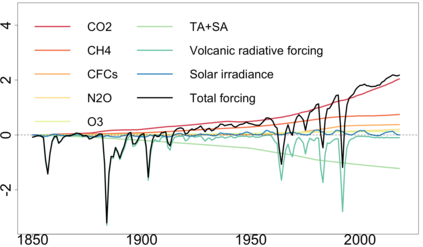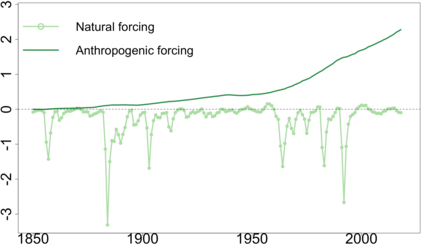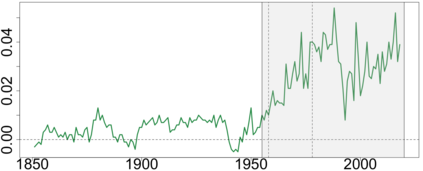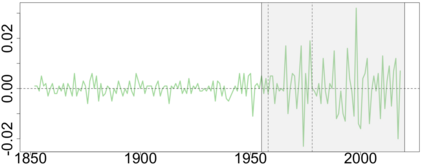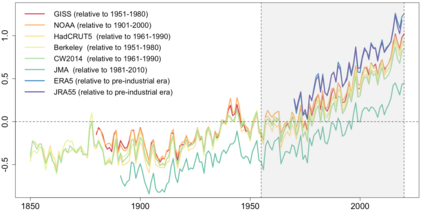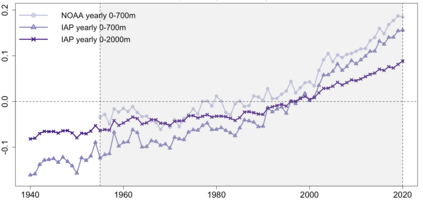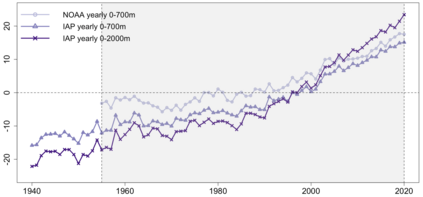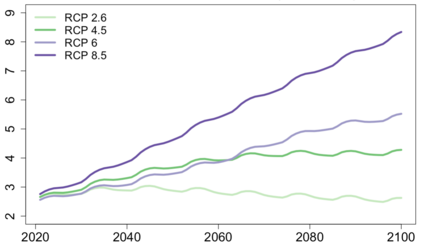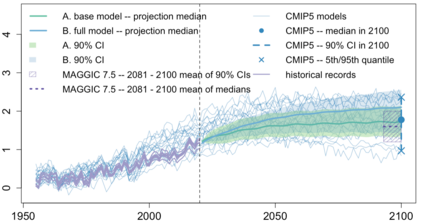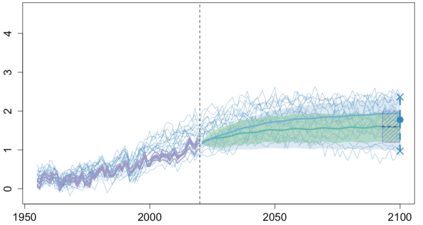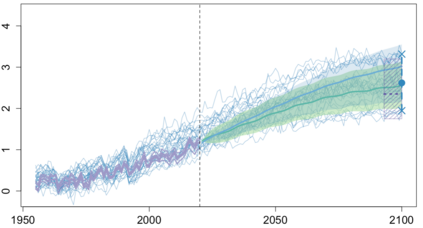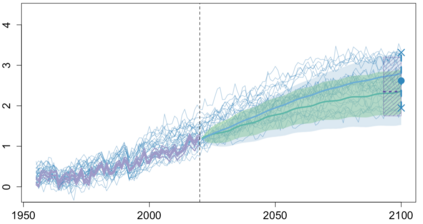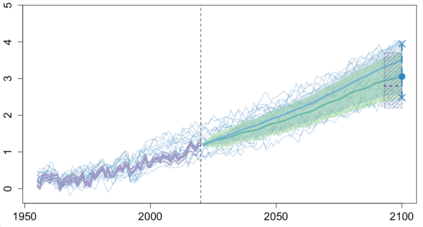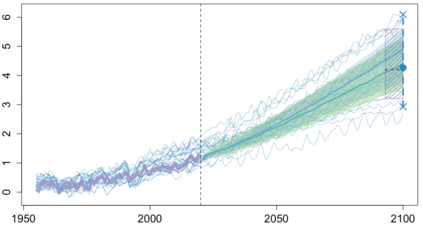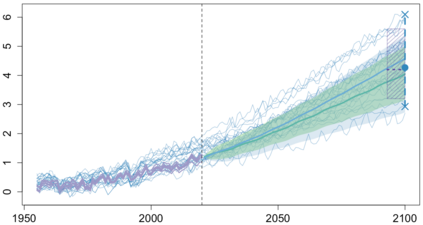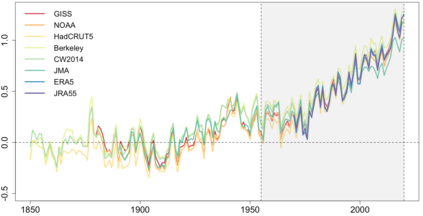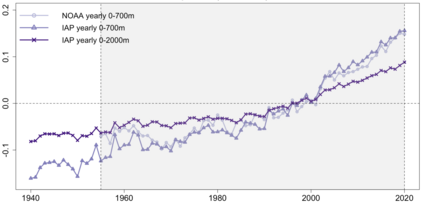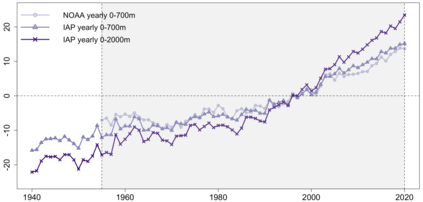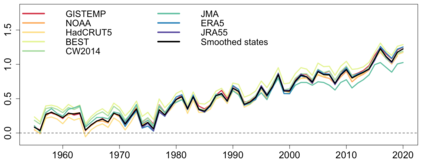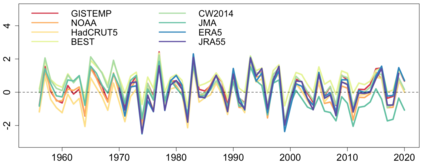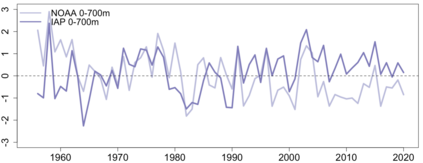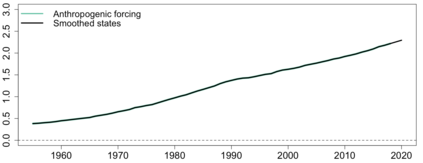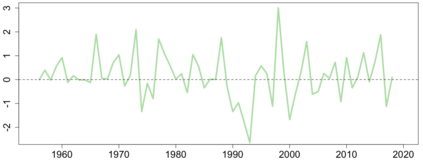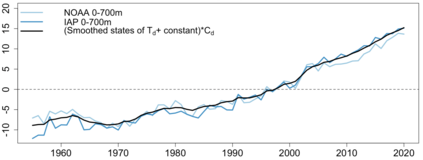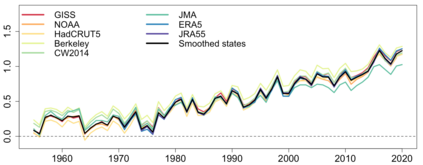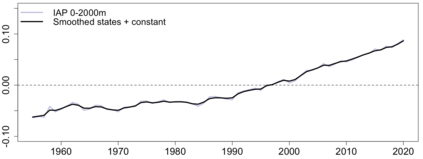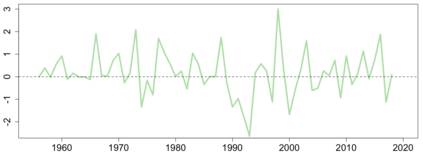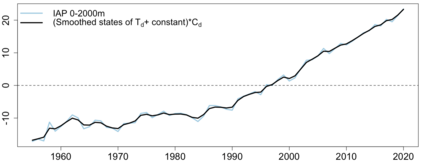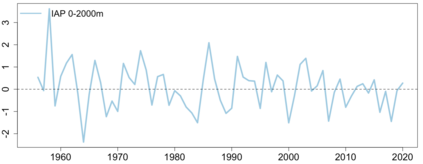This paper estimates the two-component energy balance model as a linear state space system (EBM-SS model) using historical data. It is a joint model for the temperature in the mixed layer, the temperature in the deep ocean layer, and radiative forcing. The EBM-SS model allows for the modeling of non-stationarity in forcing, the incorporation of multiple data sources for the latent processes, and the handling of missing observations. We estimate the EBM-SS model using observational datasets at the global level for the period 1955 - 2020 by maximum likelihood. We show in the empirical estimation and in simulations that using multiple data sources for the latent processes reduces parameter estimation uncertainty. When fitting the EBM-SS model to eight observational global mean surface temperature (GMST) anomaly series, the physical parameter estimates and the GMST projection under Representative Concentration Pathway (RCP) scenarios are comparable to those from Coupled Model Intercomparison Project 5 (CMIP5) models and the climate emulator Model for the Assessment of Greenhouse Gas Induced Climate Change (MAGICC) 7.5. This provides evidence that utilizing a simple climate model and historical records alone can produce meaningful GMST projections.
翻译:本文利用历史数据估算了作为线性状态空间系统(EBM-SS模型)的两部分能源平衡模型(EBM-SS模型),这是混合层温度、深海层温度和辐射力的联合模型。EBM-SS模型允许模拟非常态强迫、为潜在过程纳入多种数据源以及处理缺失的观测。我们用最大可能性估算了1955-2020年全球水平观测数据集的EBM-SS模型。我们在实验估计和模拟中显示,利用多种数据源进行潜伏过程会减少参数估计的不确定性。当EBM-SS模型与8个全球观测平均地表温度(GMST)异常系列相匹配时,物理参数估计数和根据代表集中路径(RCP)设想的GMST预测可与组合模型5(CMIP5)模型和温室气体诱导气候变化评估气候模拟模型(MAGICC)的预测相比较。这提供了仅使用简单的气候模型和历史记录即可产生有意义的GMST预测的证据。

